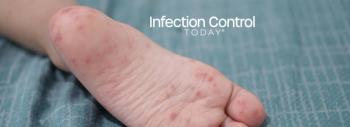
Internet Program Encourages Handwashing, Reduces Spread of Cold and Flu Viruses
A web-based program to encourage more frequent handwashing reduces the risk of catching and passing on respiratory tract infections to other household members, a randomized trial of more than 16,000 UK households published in The Lancet has found. Users of the program, called PRIMIT, also reported fewer gastrointestinal infections, a lower demand for consultations with their doctors, and fewer antibiotic prescriptions.
A sample illustration from the PRIMIT program.
A web-based program to encourage more frequent handwashing reduces the risk of catching and passing on respiratory tract infections to other household members, a randomized trial of more than 16,000 UK households published in The Lancet has found. Users of the program, called PRIMIT, also reported fewer gastrointestinal infections, a lower demand for consultations with their doctors, and fewer antibiotic prescriptions.
“Our findings suggest that a simple, cheap internet programme to encourage handwashing can reduce the risk of infection by around 14 per cent. Because most of the population catches coughs, colds, sore throats and other respiratory infections, this could have an important impact on reducing the spread of these viruses in the general population, and also help reduce the pressure on NHS services during the winter months,” explains lead author professor Paul Little from the University of Southampton in the UK.
The study examined the real-world effectiveness of PRIMIT, a free-to-access, interactive, web-based program. The program has four weekly sessions which explain medical evidence, encourage users to learn simple techniques to avoid catching and passing on viruses, monitor handwashing behavior, and provide tailored feedback.
Across three winters from January 2011 to March 2013, in the midst of the season for flu and other respiratory infections, researchers enrolled 20,066 individuals aged 18 years and older from 344 general practices across the UK. Volunteers were randomly assigned access to the PRIMT website or no intervention. Participants were followed for 16 weeks and questionnaires were used to measure episodes of respiratory infections, duration of symptoms, and to check whether other household members had a similar illness.
At 16 weeks, 4,242 individuals (51 percent) in the PRIMIT group reported at least one respiratory infection compared with 5,135 individuals (59 percent) in the control group, equivalent to a 14 percent reduction in risk. The risk of catching a flu-like illness was about 20 percent lower in the PRIMIT group compared to the control group, and need for primary care consultations and antibiotic prescriptions were also reduced by 10 percent to 15 percent in these individuals.
According to Little, “The majority of UK households now have access to the internet, and it has become a central source of health information in a pandemic. Because of this, PRIMIT could play an important role in reducing the spread of flu and the strain on the NHS during a pandemic-and at very little cost to the health service.”
Writing in a commentary, professor Chris van Weel from Radboud University in Nijmegen, Netherlands and Australian National University in Canberra, Australia says, “Influenza is only one of the many infectious diseases that can affect populations. An even more important point to take from this study is therefore the promotion of handwashing as a generic routine to manage transfer of infections. This broader applicability is the intervention’s real attraction, and should be the basis of any cost-effectiveness calculation as well. In this context, the small reduction in antibiotic prescriptions should be taken into account. The investigators showed improved management of infections while using fewer antibiotics, which is in line with policies to counter the threat of population resistance to antibiotics.”
This study was funded by the Medical Research Council.
Reference: The Lancet, Published online Aug. 7, 2015.
Source: University of Southampton
Newsletter
Stay prepared and protected with Infection Control Today's newsletter, delivering essential updates, best practices, and expert insights for infection preventionists.






